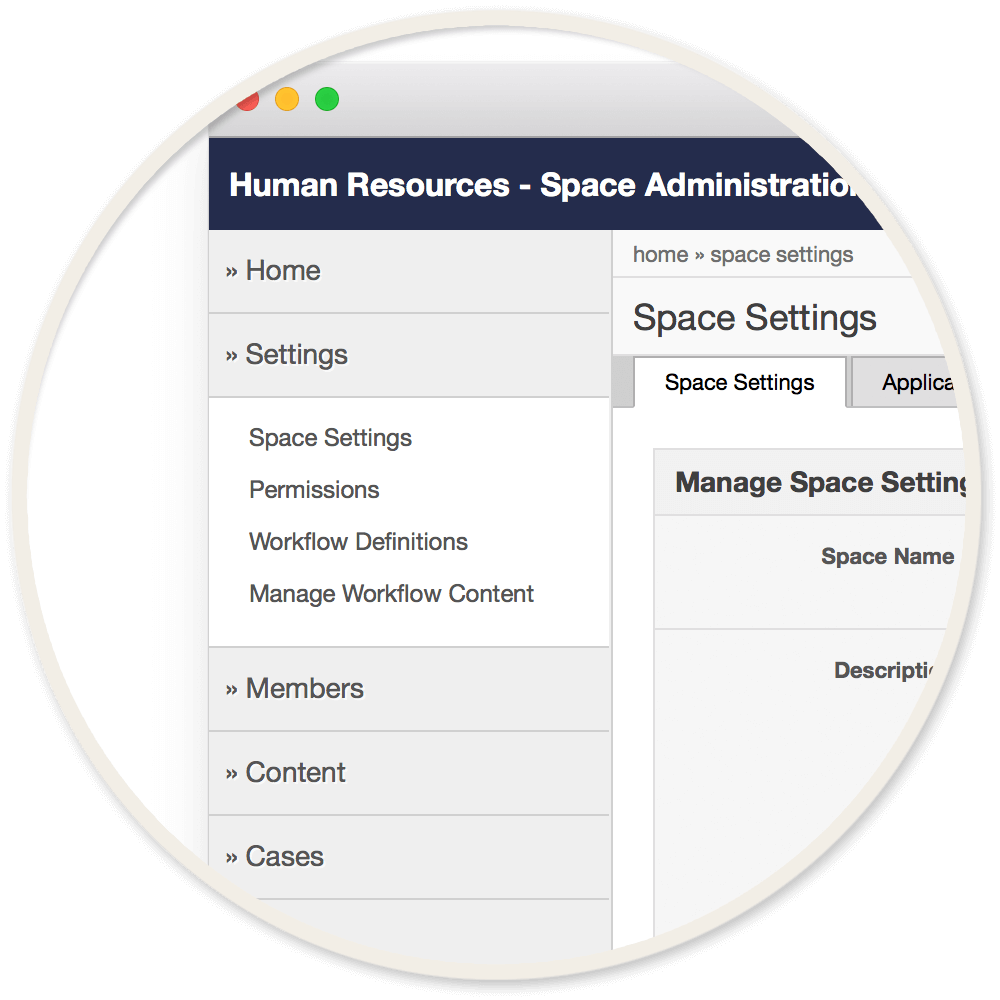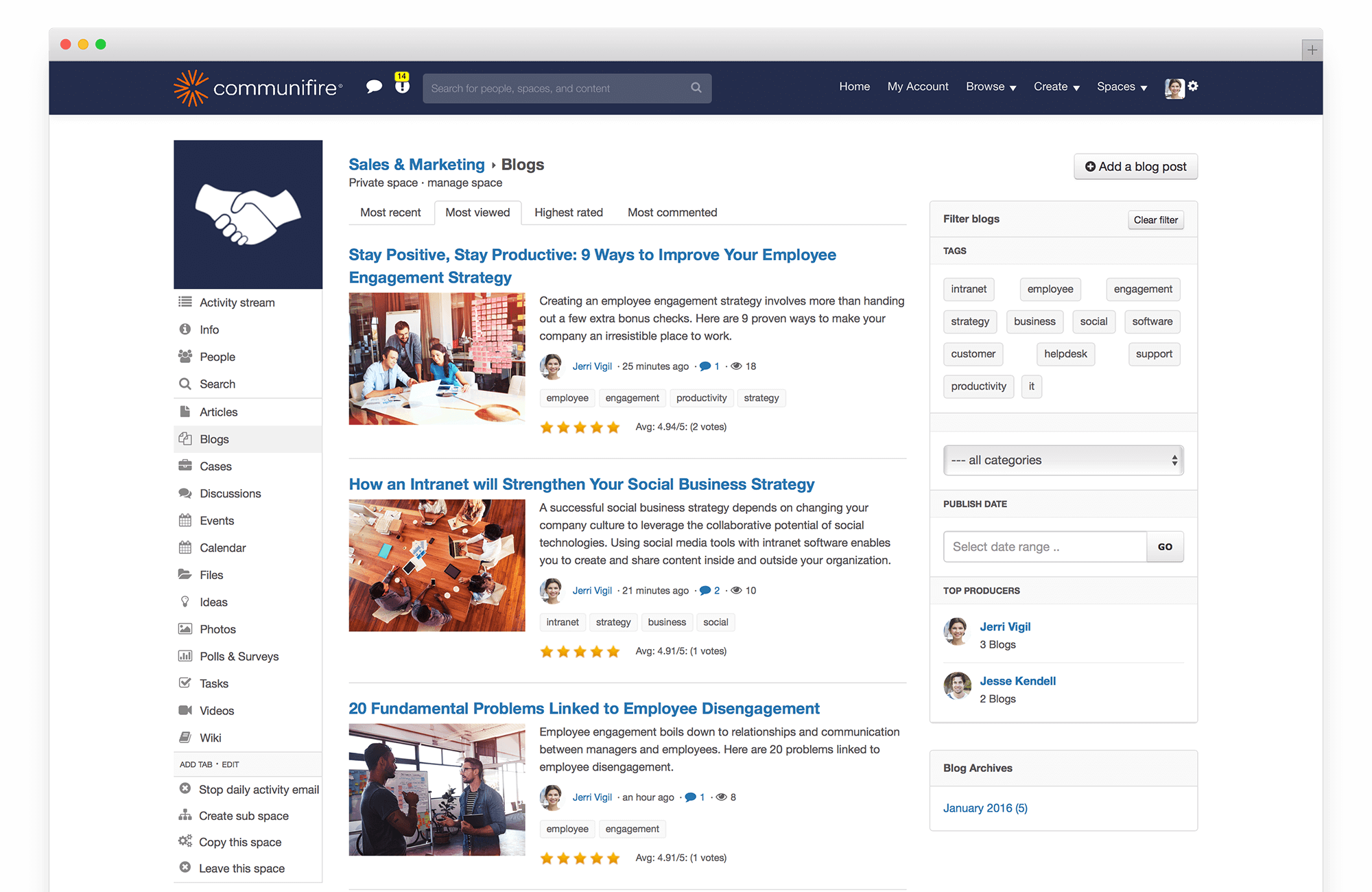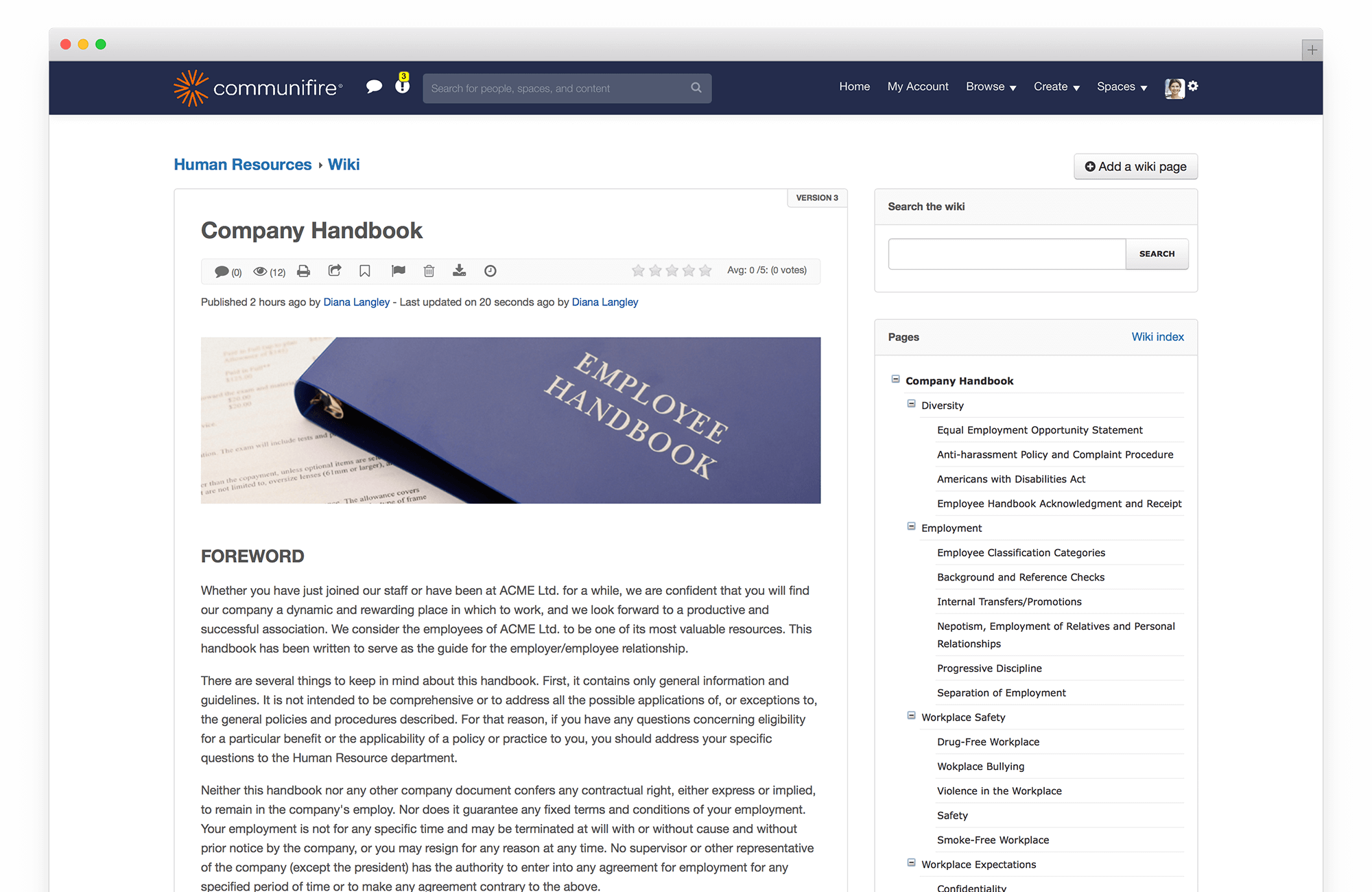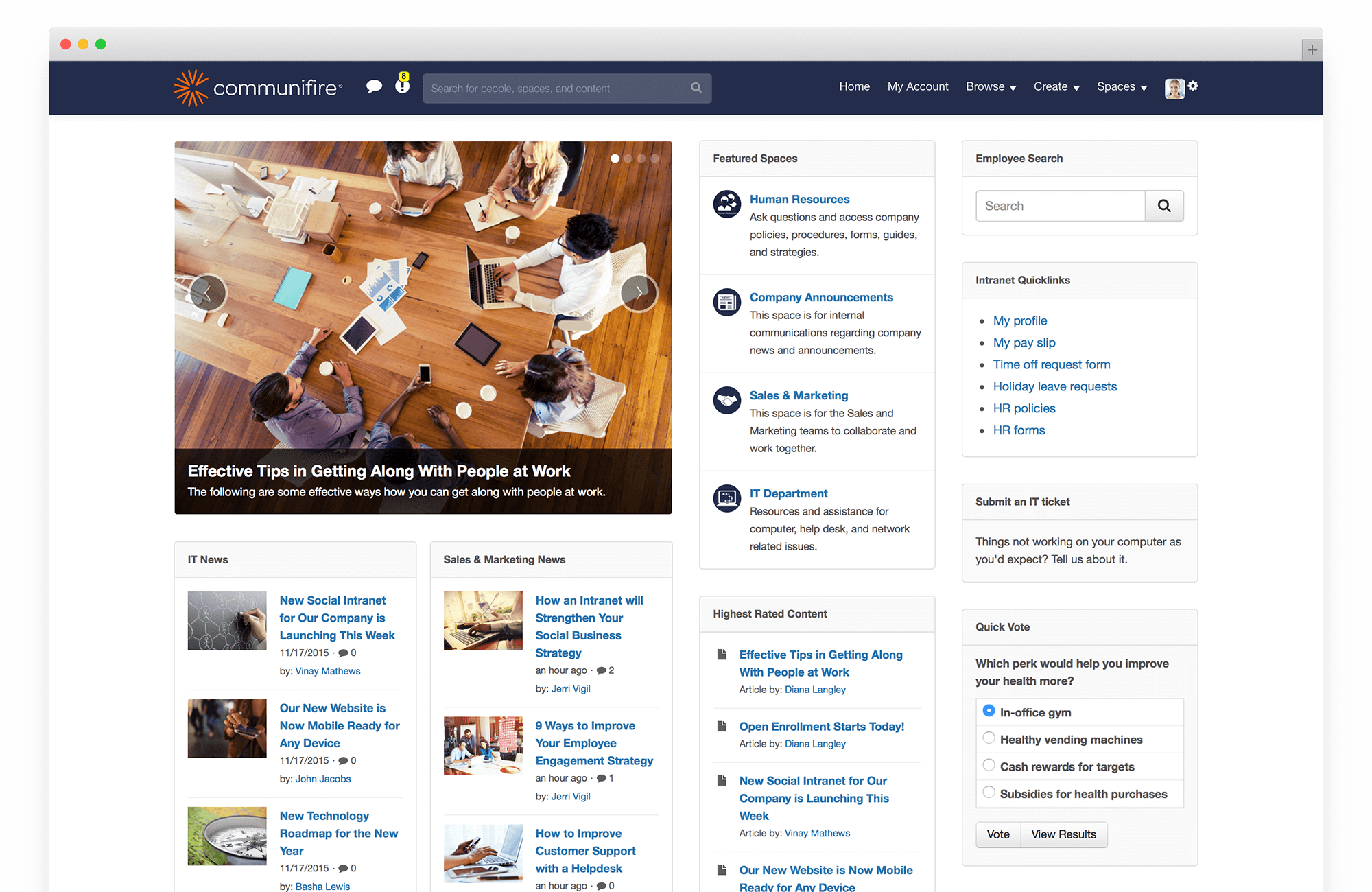When building a new infrastructure, it’s good to have a team of people who can run things. Your company intranet is no different … it requires people to manage it. And no matter how well designed, it won’t grow if the right people aren’t around to move things forward.
Every successful intranet software platform has people devoted to run and manage it. But the logistics of this can vary depending on the size and scope of your organization. Smaller companies may not have the resources to support the following roles and responsibilities. In this case, your social intranet software vendor may handle what you can’t do in-house. This means you’ll seldom have to worry about problems related to a short-staffed intranet.
The following are some of the most common intranet team roles and responsibilities:
1. Administrator
On every intranet team, there should be an administrator making sure everyone follows the rules. This may sound harsh, but no organization can run without a solid administrative backbone. Your intranet administrator moderates comments and sets permissions. They make sure things don’t get out of hand. This role is important when you have a large subset of employees using the intranet every day. The need for moderation grows with every contribution to the virtual community.
Intranet administrators should also be responsible for indexing. This keeps metadata working for the content that gets posted to your community. Indexing becomes light maintenance work once you’ve set the proper foundation. There’s no need to hire someone to handle only this task. The best administrators have an eye for detail, yet don’t allow power to get to their heads.
2. Content Writer
Content marketing is one of the most effective ways for businesses to get the word out and build an audience. Apply these principles to your intranet, and you’ll see that great content serves roles outside of marketing and sales. An internal content writer prepares stories related to company news or events. They can also write about the progress of the intranet itself, or anything else. In essence, they are the “storytellers” of the community. They keep people informed and up to date of any pertinent information.
When choosing your intranet content strategy and writer, look for people with experience. No one wants to read blogs or articles that are … well … hard to read. You’ll also want your content writers to come up with topic ideas. Whoever takes on the role must be quick on their feet and have a knack for this type of work. Choose a great content writer, and your social intranet will come alive.
3. Technical Writer
Your content writer can engage the community and keep people informed. But you’ll also want a good technical writer. One of the main goals of a social intranet is for the community to become a catch-all for ideas and information. This makes it the perfect place for storing company documentation and other technical literature. It’s important to have someone uploading old documents to the community. It’s also important to create new documentation that follows your company’s growth.
Technical writers differ from content writers. They focus on the details and the information employees need to do their jobs. Content writers focus on evocative language and drawing the reader in. Finding a technical writer that can write consistent documentation will benefit your company intranet and intranet team.
4. Designer
Today’s modern and attractive intranets weren’t just born that way. They result from countless hours of hard work by talented designers. A great designer can keep an intranet looking smooth, sleek, and modern in every way. Anyone who has used a clunky intranet knows just how stressful and problematic things can get. This is why it’s good to have a designer who can keep the intranet functioning with a clean appearance.
For smaller organizations, hiring a designer for your intranet team may be out of reach. This is where the software vendor comes in. They can handle the intranet design process to ensure consistency and functionality. You don’t have to worry about it.
5. Analyst
A company deploys an intranet for one primary reason … to streamline daily processes and improve the business. So there needs to be a business analyst who determines the moves to put the company ahead of its competition.
These people should have experience working for the company and should know the organization. This way, they can isolate trends and determine the best route for moving forward.
6. Architect
The information architect of an intranet team differs from the designer. The architect is in charge of handling information. Information can flood an intranet if it isn’t managed. So it’s important that someone be present to handle this role.
Having great intranet information architecture is often a process of trial and error. Consider the needs of the company. This will dictate how the architect structures the community. In this regard, feedback from community members is helpful.
7. Artist
The graphic arts field has grown over the past decade … because having a strong web presence is so important. A great graphic artist can add personality and creativity to their work, while staying within brand guidelines.
You can use graphic arts in your intranet in many ways … from the look and feel of the community to the images in a blog or wiki.
8. Usability Expert
The term “usability” describes exactly what you think it would. A usability expert ensures that community members don’t have problems when using the intranet. Usability goes a long way with employee productivity, yet it gets overlooked when people have other priorities. Fixing this issue is a must.
A usability expert needs to test things to see what changes a community needs. This ensures that no hurdles stand in the way of performance.
In Conclusion
Building an intranet is something that takes time. So get some good people and assign them these intranet team roles and responsibilites. Put together a “dream team,” and everything will come together over time.
















 info@axerosolutions.com
info@axerosolutions.com 1-855-AXERO-55
1-855-AXERO-55


